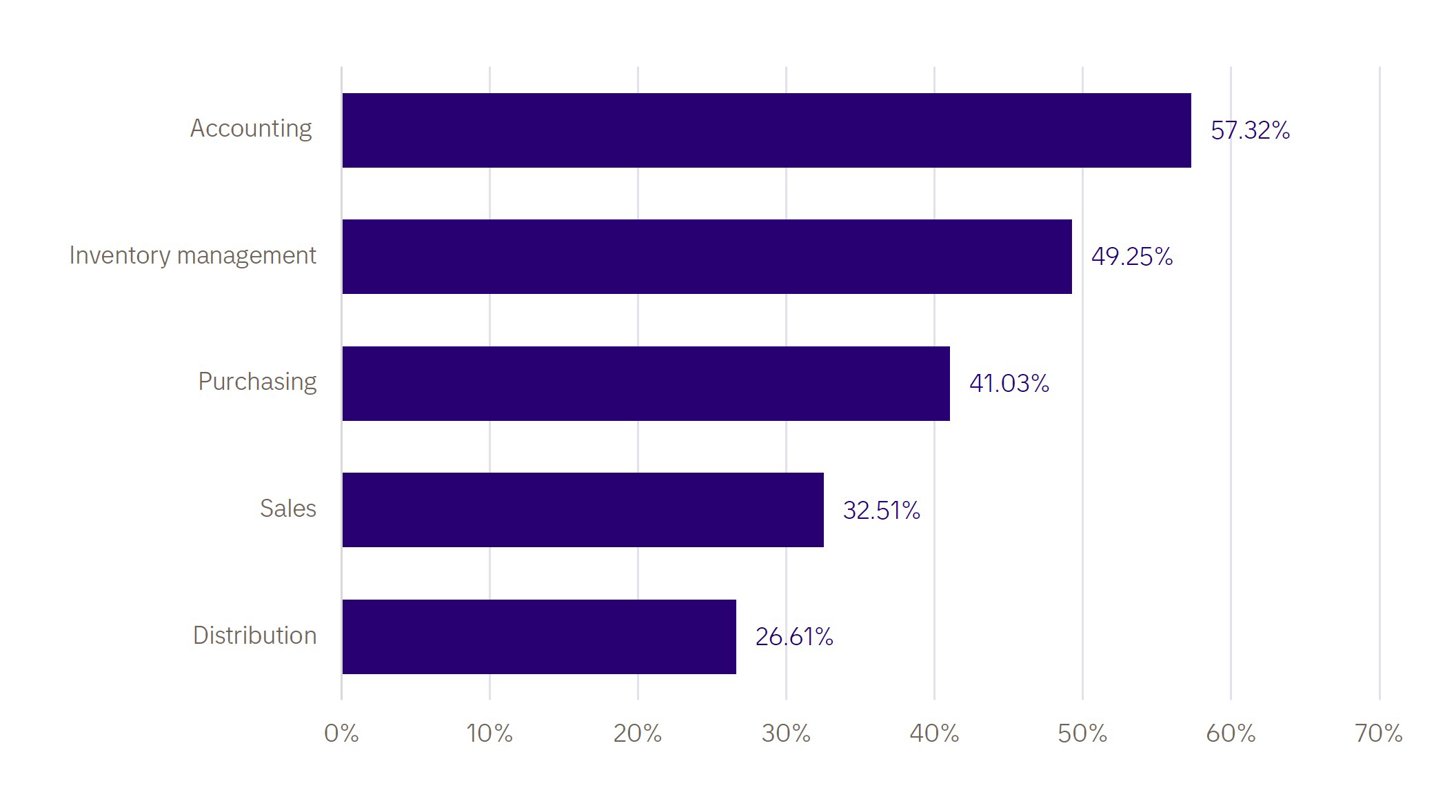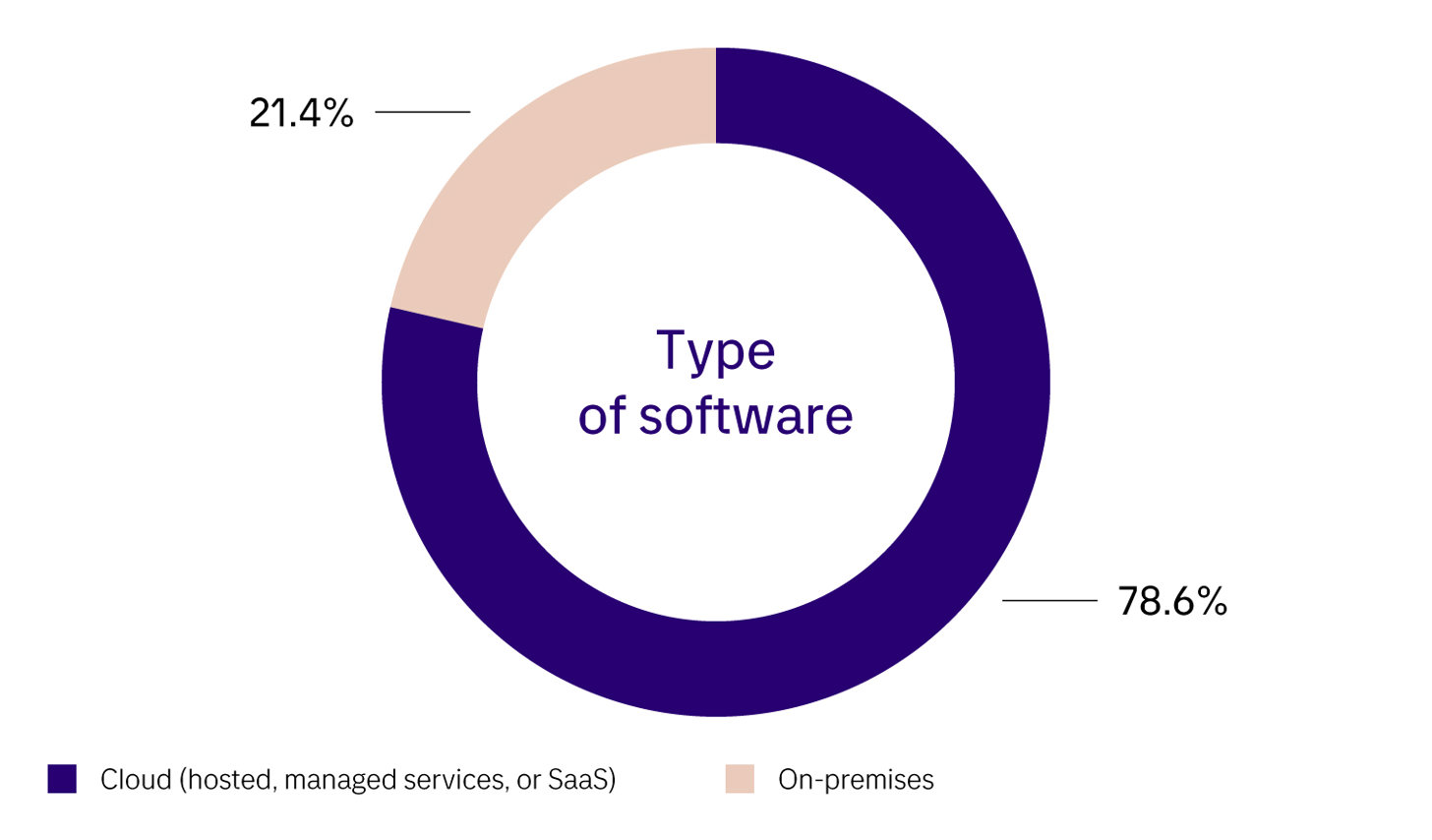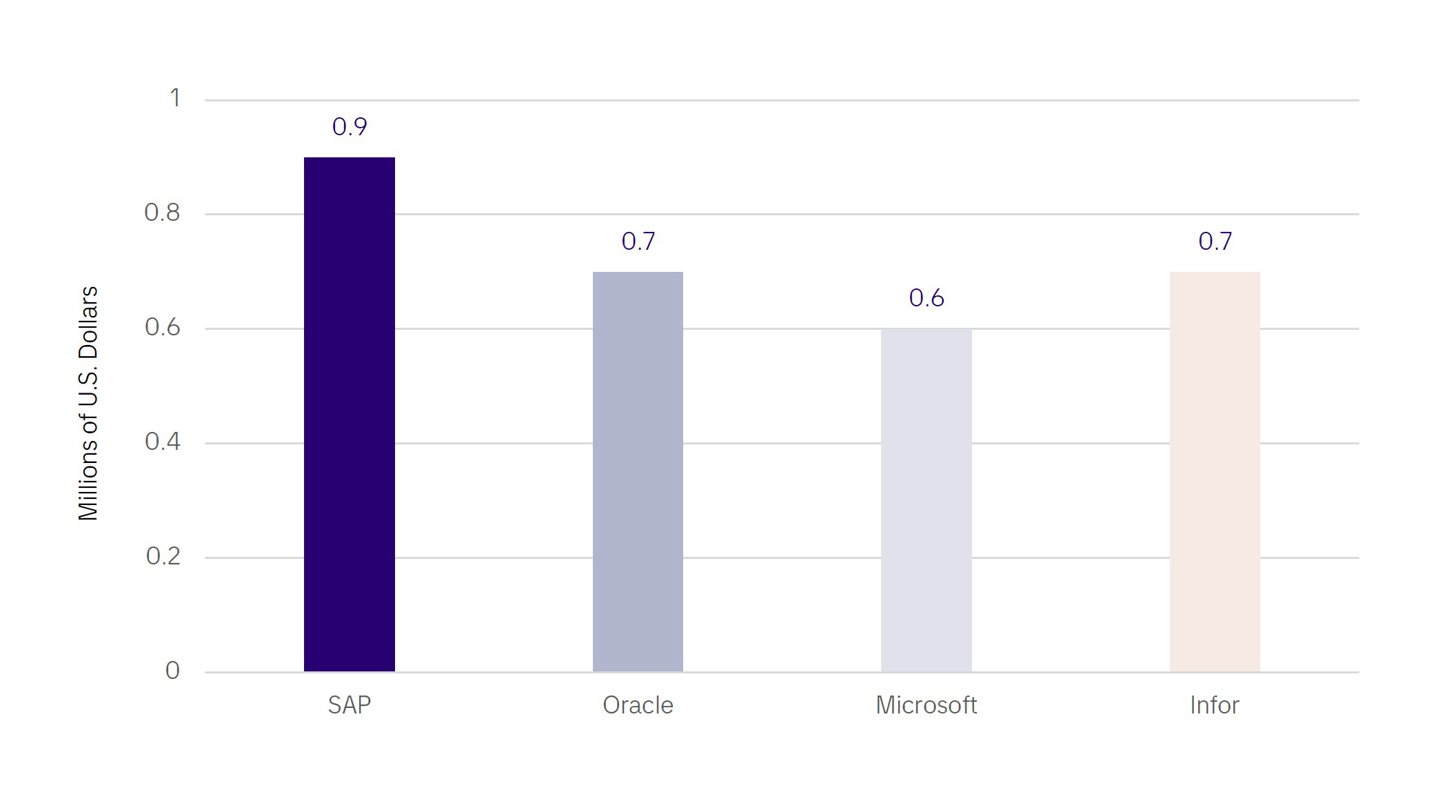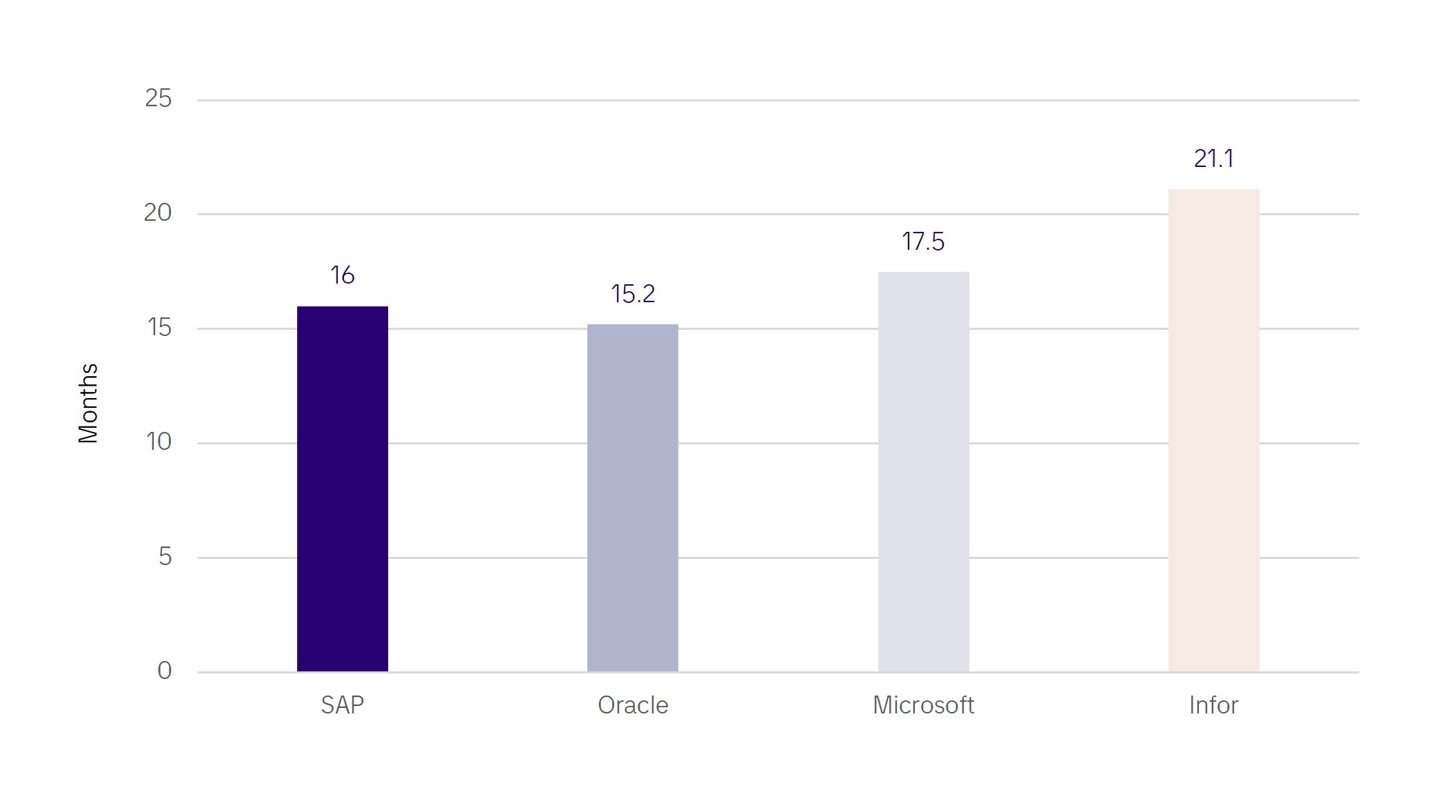
Exploring the Best ERP Systems: Microsoft, SAP, Oracle, Sage, and Salesforce
Compare top ERP systems Microsoft, SAP, Oracle, Sage, and Salesforce – to discover which solution best supports your business goals and drives growth and efficiency.
The advantages of enterprise resource planning (ERP) software are widely recognized. By centralizing data in a unified system, ERPs provide organizations with a real-time, comprehensive picture of all core business processes.
With smoother data sharing across departments, teams can coordinate efficiently and drive smarter decisions. The demand for ERP constantly grows – by 2027, the market for enterprise resource planning is anticipated to exceed $49.5 billion.
However, selecting the right ERP solution can be complex. The market is crowded with platforms that cater to different industries, organization sizes, and business models. In this guide, we compare five of the most recognized ERP providers – Microsoft, SAP, Oracle, Sage, and Salesforce – to help you evaluate which system best aligns with your organization’s goals.
What Are ERP Systems?
What exactly is an ERP system, and why has it become indispensable for both large enterprises and SMBs? ERP systems evolved from MRP – Material Resource Planning System software, which manufacturers used in the 1990s to align supply and demand processes, such as tracking orders and managing raw materials stock.
Over time MRP systems have evolved into more sophisticated ERP platforms, expanding their scope to cover all facets of business from procurement, finance, and warehouse management to human resources and more. Simply put, ERPs integrate core business functions into a single system to provide a common workflow and a unified data environment. This leads to benefits like greater transparency, efficiency, and collaboration across multiple departments.
ERP systems typically run on a myriad of hardware and network configurations, via a database and repository. They allow integration of all these processes in one place. The key to an effective ERP system is the seamless integration of all the company’s modules into a single structure. Common ERP modules include:
- Procurement: Includes supplier relationship management (SRM) to enhance coordination with vendors. When aligned with production management, it can significantly boost efficiency and reduce costs.
- Production: Supports manufacturing planning, resource allocation, and ensures the distribution process meets organizational goals.
- Distribution: Streamlines warehouse operations and the movement of goods to customers to improve efficiency.
- Accounting: Automates financial operations across departments, delivering real-time updates, insights, and ensuring regulatory compliance.
- HR: Manages comprehensive employee data and coordinates departmental needs to best utilize current work force, identify areas of need, and align workforce planning with financial and business objectives.
- CRM: Maintains all customer information and tracks engagement across the customer lifecycle.
- Sales: Coordinates order intake, integrates fulfillment scheduling with production and distribution, and invoicing in coordination with accounting.
Top features people look for when selecting an ERP

Of course, ERP functionality can vary based on organizational needs. For example, a healthcare enterprise may require a component that relates to regulations and HIPAA requirements. A bank may prioritize features for reporting and auditing. Leading ERP providers support this customization to meet the unique requirements of each organization.
Top 5 ERP Systems: Microsoft Dynamics 365, SAP, Oracle, Sage, and Salesforce
When it comes to ERP system types, many large enterprises still maintain an in-house system, though that number is steadily decreasing. The latest report from the ERP consulting firm Panorama shows that of the companies that moved into ERP technologies, 78% are using cloud solutions, while only 21% continue to rely on an in-house system. For small and mid-sized companies, the benefits of cloud ERP are clear – lower cost and greater agility. Cloud versions typically cost less than on-premises systems because they require fewer resources from IT departments to maintain and update.
On-premises vs cloud ERP

However, cost is not the only factor to consider when choosing the right ERP system for your business. Our team examined the top five ERP system providers: Microsoft Dynamics 365, SAP, Oracle, Sage, and Salesforce. We assessed them based on key criteria of functionality, total cost of ownership (TCO), and ease of implementation and integration.
Microsoft Dynamics 365
Microsoft Dynamics 365 is a comprehensive, cloud-based business management and sales suite designed for businesses of all sizes. It offers integrated applications for managing operations, finances, sales, HR, marketing and more – all backed by Microsoft's world-class support team.
Functionality: In addition to ERP functions like sales tracking and inventory management, Microsoft Dynamics 365 also comes with a ready-made customer relationship management system that can be linked with your existing CRM software. Quick setup and intuitive workflows save valuable time while making new acquaintances in the business world.
Cost of ownership: Known for its value, Dynamics 365 delivers enterprise-level functionality at a competitive price. This makes it one of the most cost-effective business solutions available on the market today with a reported 265% ROI after three years.
Panorama’s 2023 Clash of the Titans report, which compares the best ERP system solutions, gives the following figures for ERP implementation cost:

Ease of integration and implementation: Dynamics 365 has a robust set of APIs that allow you to integrate your existing systems with the platform seamlessly. Dynamics 365 works well with Microsoft Azure, used by over 95% of the Fortune 500 companies and thousands of smaller businesses around the world. Azure is a one-stop-shop cloud platform, offering superior encryption, security, and artificial intelligence and machine learning to help you run your cloud business.
Tietoevry Create is a leading Microsoft services provider with deep expertise in both transformative solutions and Microsoft consulting services across industries. Our team has held a Microsoft Azure Expert Managed Service Provider (MSP) status for three years and expects to renew it soon.
SAP ERP System
SAP S/4HANA is a single, unified SAP ERP system that has been optimized for the cloud. It combines the power of SAP’s in-memory HANA database with the flexibility of a cloud-based solution.
As a long standing leader in enterprise software, its ERP solution known as S/4HANA delivers world-class software solutions that cover all business needs including business intelligence, customer relationship management, supply chain management, etc.
Built on a robust, enterprise-wide architecture, SAP ERP offers a comprehensive set of best practices and thousands of industry-specific solutions developed by SAP and its partners. This helps companies of all sizes accelerate business growth with proven, scalable technology.
Functionality: The SAP ERP system offers a wide range of modules and submodules to support various business operations. Commonly used modules include Finance and Controlling (FICO), Supply Chain Management (SCM), Human Capital Management (HCM), Customer Relationship Management (CRM) and Product Lifecycle Management (PLM). This allows organizations to streamline processes across departments.
Cost of ownership: While SAP’s initial licensing costs are moderate, total expenses often increase due to necessary customizations and integrations. These enhancements, which many businesses require, can add to the overall investment.
Ease of integration and implementation: SAP implementations are typically smooth thanks to SAP’s comprehensive, in-house developed platform. While the product is packed with great functionality, if companies want to incorporate custom third-party applications or customize the standard setup, it requires additional cost and coordination with SAP.
Given the size of the SAP system, implementation can be lengthy. Companies must carefully assess their needs for every module and potentially eliminate those they do not need. With SAP S/4 HANA, businesses can drive major operational changes and leverage cutting-edge technological advances to gain a competitive edge.
Case in point. Tietoevry Create built an integrated SAP S/4HANA platform for a multinational agro-industrial conglomerate Delta Wilmar, supporting 300+ users with efficient business management tools. The integrated solution enabled swift re-engineering of the company's business processes while also facilitating a smooth transition away from outdated systems and the standardization of master data. This project laid the foundation for broader business transformation, positioning the entire holding to fully adopt the SAP S/4HANA platform.
Oracle ERP System
Oracle ERP is a comprehensive suite of enterprise-class software applications that can be integrated to meet the needs of cross-industry organizations.
Its ERP solution is designed to meet the needs of large organizations with complex business processes and provides an integrated approach to managing all aspects of business operations. Oracle’s ERP system now leads the market with a 6.63% market share as of 2024.
Functionality: The software offers extensive functionality covering financial management, supply chain management, customer relationship management (CRM), human resources management (HRM), manufacturing, project and portfolio management (PPM), and customer service. According to the Enterprise Resource Planning Data Quadrant report, 83% of users are highly satisfied with the breadth of features of Oracle solutions.
Cost of ownership: Oracle has grown its rich ERP functionality through strategic acquisitions like NetSuite, MICROS, and PeopleSoft. While this has resulted in a high-end product, it remains cost-effective relative to company revenue. For instance, the total cost of ownership for the average SAP client accounts for 4% of that company's annual revenue, while the comparable figure of TCO for the average Oracle client is only 1.7% of its revenue.
Ease of integration and implementation: The system offers flexible integration options, supporting different modules and solutions (including third-party systems), as well as their implementation. Oracle Cloud ERP integration adapters enable seamless connection between on-premises and third-party SaaS applications. While Oracle ERP implementations can be time-intensive, they generally take less time on average compared to other systems:

Sage
Sage ERP is a comprehensive business management software suite designed to help companies track and manage business resources.
Decades after its market debut, Sage remains a top choice for accountants and CPAs as it offers everything you need from ERP system software in one place. The user-friendly interface design makes it accessible even to users with limited ERP experience. It was also recognized in the 2025 Top ERP Systems Report as a strong contender for companies across industries looking to upgrade their corporate software.
Sage is an ideal choice for small businesses that are looking to upgrade their financial management processes and store sensitive client data on a long-term basis. The software can be customized to suit your business needs, with many options available for customization.
Functionality: The Sage ERP solution covers all essential business processes, including financials, sales, purchasing, and production management, all in one single system.
Cost of ownership: Although Sage ERP has many benefits, it can be costly to implement and maintain. Installation cost varies based on hardware configuration. Using Sage's recommended hardware configurations generally lowers server costs. Additional costs may apply if you need additional hardware or have special requirements such as firewalls or load balancers that must be integrated with Sage.
Ease of integration and implementation: Sage ERP is known for its ease of integration and implementation. The system is flexible, scalable, and can be configured to meet your specific needs. Sage ERP also has a large ecosystem of partners to support efficient implementation.
Sage ERP has been successfully implemented in thousands of businesses across all industries, from small companies with fewer than 50 employees to large corporations with thousands of employees. Sage ERP is available in a variety of different formats, including cloud-based options, which makes it easy to set up and run the software on any device you choose.
Overall, ERP adoption can be complex with a large percentage of ERP implementations end in failure. In fact, 38% of companies state having suffered a "serious failure" when attempting to adopt their ERP system. The primary causes of ERP failure were reported as:
- 27% - ongoing integration challenges
- 25% - lack of scalability and flexibility
- 17% - poor fit for a retail brand
- 15% - lack of expert installation consultants to help steer the process.
Nevertheless, partnering with professional IT service providers can effectively overcome these obstacles and support a successful ERP deployment.
Salesforce CRM
Contrary to popular belief, Salesforce is not an enterprise resource planning system. Salesforce does not offer an ERP package directly, but rather a number of business solutions that can be integrated with and bolster existing ERP systems. At the heart of Salesforce offering is Customer 360 CRM, a popular CRM software. Salesforce is a CRM industry giant, having ranked as the #1 CRM provider for 11 consecutive years. Any of the ERPs in this article can be seamlessly connected with this product.
Salesforce is a versatile marketing platform offering tools for social media management, email marketing, website creation and maintenance, analytics, and more.
Used by some of the biggest brands in the world including Adobe, IBM, Microsoft, and Oracle, it is a popular choice for businesses of all sizes but is especially well-suited for small and medium-sized businesses.
Functionality: Salesforce delivers a wide range of features including marketing automation, lead management, and advanced analytics that can be used to improve productivity and enhance customer experience.
Cost of ownership: Salesforce operates on a subscription model, allowing companies to pay only for the service they use. There are no upfront fees or long-term contracts required, making it a flexible and affordable choice for small businesses and startups.
The cost of ownership of Salesforce ERP varies depending on subscription type (subscription or paid license), user count, and additional features selected.
Ease of integration and implementation: Salesforce ERP has a simple implementation process that can be completed in less than a week. It includes preconfigured connectors that allow users to connect to other systems through APIs or web services. Salesforce ERP also offers pre-built applications, which can be customized to the specific business needs of your organization.
To sum up, choosing the right ERP system or CRM solution depends on your business needs. When considering a switch between systems, it is recommended to consult an expert first to ensure a smooth transition and avoid disruptions in your company’s workflow.
Final Thoughts
Choosing an ERP system is a lot like selecting a vehicle – everyone has different needs and preferences. Some want all the available bells and whistles, while others just want the basics. Some require spacious vans or SUVs to accommodate large families, and others might not need a car at all, relying instead on public transportation. Business needs vary just as much.
Here are a few questions to answer when choosing your solution:
- What are the primary business benefits you are expecting from an ERP system, and how will they impact your organization? Research, compare, and explore your options, whether on-premises or in the cloud.
- What does a company need to consider when deciding whether to install an ERP system or not? This is where consulting with a trusted service provider can guide you through potential challenges of an ERP implementation or migration.
Start by identifying exactly what you want your ERP software to do. Conduct thorough research, read user reviews, and discuss with vendors on your shortlist. Like any organizational change, ERP adoption requires careful planning and preparation. It will take time, money, and patience, but in the end, you can choose an efficient, cost-effective system that can save your business time and money.
Tietoevry Create is a trusted technology partner of leading ERP solution providers as Microsoft, SAP, and Oracle that is ready to help with ERP selection, implementation, and customization.


